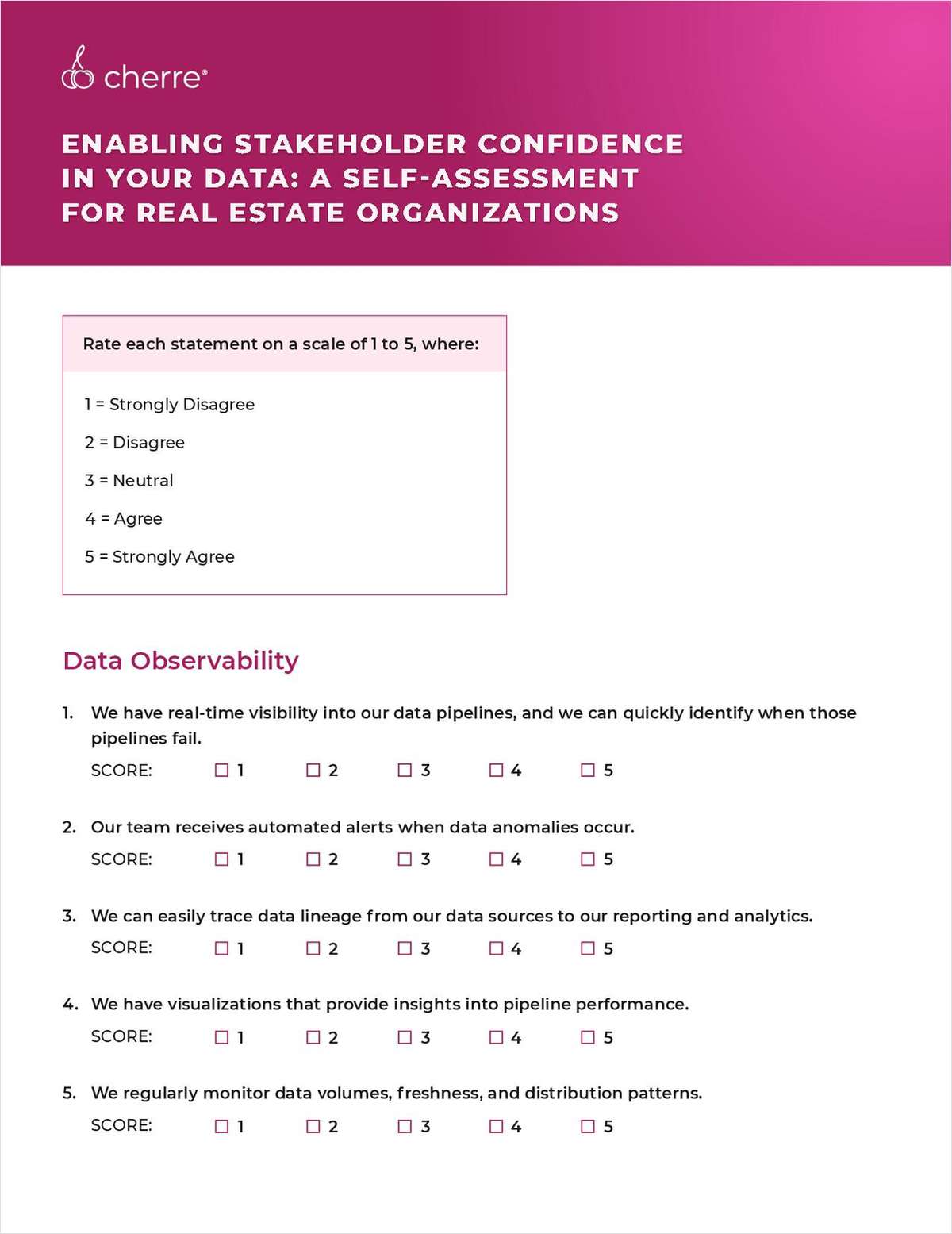IRVINE, CA—Home-buying demand will continue to grow, driven mainly by Millennials deciding they would like to buy, First American Financial Corp.'s chief economist Mark Fleming tells GlobeSt.com. The firm's recent Potential Home Sales Model reports that the impact of rising rates continues to play with market potential.
“While higher mortgage rates did reduce the market's potential, they also will have the positive effect of moderating house price appreciation,” says Fleming in the report. “More troubling is the lack of homes for sale, which is causing a 'matching-trap' where current homeowners are reluctant to sell because of concerns about the ability to find a home to buy and the likelihood that their new mortgage will have a higher rate than their existing mortgage.”
So is demand declining? “The low inventory of homes for sale, currently 3.6 months' supply, continues to be a concern,” says Fleming. “Tight supply accompanied by rising prices is more indicative of a market reacting to a shift in the willingness of homeowners to list their homes for sale, and less indicative of a market reacting to a shortage of demand due to affordability issues. Restricted demand would result in lower quantity of homes for sale and lower, not higher, prices.”
Fleming tells GlobeSt.com he believes the market will likely become very competitive this spring. We also spoke with him about the impact the “matching trap” is having on the housing industry and the economy in general.
GlobeSt.com: Aside from perpetuating the lack of inventory, what other impacts is the “matching trap” having on the housing industry and the economy in general?
Fleming: In addition to being a cause for the low inventory levels, the “matching-trap” dynamic is also a main reason for the pace of house price appreciation and a cause of declining affordability for new first-time buyers.
GlobeSt.com: Where do you see demand heading as prices continue to rise and inventory continues to be tight?
Fleming: Demand will continue to grow, driven mainly by Millennials deciding they would like to buy. Even though affordability is declining due to price increases, in many markets housing is not unaffordable by historical standards. Without a significant increase in inventory for sale, the market will likely become very competitive this spring.
GlobeSt.com: How are potential homebuyers dealing with the lack of inventory and higher prices—what are their alternatives?
Fleming: One alternative is to decide not to participate in the market, but assuming one stays “in,” then alternative loan products to the 30-year, fixed-rate loan—such as a hybrid adjustable-rate mortgage, which has a lower rate than a fixed-rate mortgage—is one way to address rising prices or allow one to make more price competitive bids in tight market.
GlobeSt.com: What else should our readers know about your most recent potential home-sales model?
Fleming: While we saw a big increase in the level of existing home sales in January, the inventory for sale remained very low. Whether or not inventory increases or stays tight will be consequential as we enter the spring buying season.
IRVINE, CA—Home-buying demand will continue to grow, driven mainly by Millennials deciding they would like to buy,
“While higher mortgage rates did reduce the market's potential, they also will have the positive effect of moderating house price appreciation,” says Fleming in the report. “More troubling is the lack of homes for sale, which is causing a 'matching-trap' where current homeowners are reluctant to sell because of concerns about the ability to find a home to buy and the likelihood that their new mortgage will have a higher rate than their existing mortgage.”
So is demand declining? “The low inventory of homes for sale, currently 3.6 months' supply, continues to be a concern,” says Fleming. “Tight supply accompanied by rising prices is more indicative of a market reacting to a shift in the willingness of homeowners to list their homes for sale, and less indicative of a market reacting to a shortage of demand due to affordability issues. Restricted demand would result in lower quantity of homes for sale and lower, not higher, prices.”
Fleming tells GlobeSt.com he believes the market will likely become very competitive this spring. We also spoke with him about the impact the “matching trap” is having on the housing industry and the economy in general.
GlobeSt.com: Aside from perpetuating the lack of inventory, what other impacts is the “matching trap” having on the housing industry and the economy in general?
Fleming: In addition to being a cause for the low inventory levels, the “matching-trap” dynamic is also a main reason for the pace of house price appreciation and a cause of declining affordability for new first-time buyers.
GlobeSt.com: Where do you see demand heading as prices continue to rise and inventory continues to be tight?
Fleming: Demand will continue to grow, driven mainly by Millennials deciding they would like to buy. Even though affordability is declining due to price increases, in many markets housing is not unaffordable by historical standards. Without a significant increase in inventory for sale, the market will likely become very competitive this spring.
GlobeSt.com: How are potential homebuyers dealing with the lack of inventory and higher prices—what are their alternatives?
Fleming: One alternative is to decide not to participate in the market, but assuming one stays “in,” then alternative loan products to the 30-year, fixed-rate loan—such as a hybrid adjustable-rate mortgage, which has a lower rate than a fixed-rate mortgage—is one way to address rising prices or allow one to make more price competitive bids in tight market.
GlobeSt.com: What else should our readers know about your most recent potential home-sales model?
Fleming: While we saw a big increase in the level of existing home sales in January, the inventory for sale remained very low. Whether or not inventory increases or stays tight will be consequential as we enter the spring buying season.
Want to continue reading?
Become a Free ALM Digital Reader.
Once you are an ALM Digital Member, you’ll receive:
- Breaking commercial real estate news and analysis, on-site and via our newsletters and custom alerts
- Educational webcasts, white papers, and ebooks from industry thought leaders
- Critical coverage of the property casualty insurance and financial advisory markets on our other ALM sites, PropertyCasualty360 and ThinkAdvisor
Already have an account? Sign In Now
*May exclude premium content© 2024 ALM Global, LLC, All Rights Reserved. Request academic re-use from www.copyright.com. All other uses, submit a request to [email protected]. For more information visit Asset & Logo Licensing.









